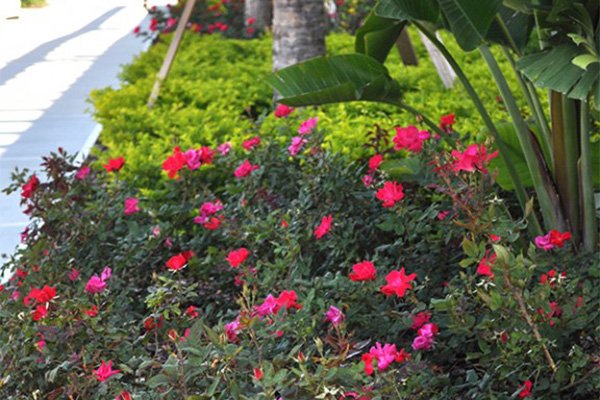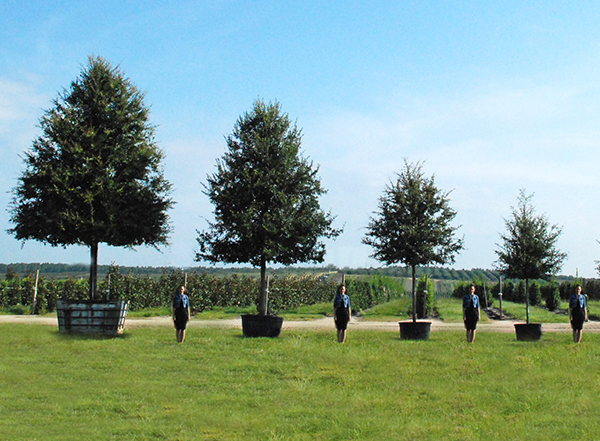Twice the price, Half the size (June 2014)

By Timothee Sallin – President, Cherry Lake Tree Farm
As the housing market has recovered, the growth in demand for ornamental trees, palms and shrubs has outpaced the growth in supply. This has led to rapid escalations in plant material prices, limited availability and smaller specifications.
“What! 120 dollars for a 30 gallon live oak!?” Jimmy stammers into the phone, “What are you guys smoking over there? Last time I paid $70 for that tree.”
“I am sorry sir, prices have been increasing lately and that is the best I can do,” Sara calmly replies. This is the twentieth customer this week calling for 30 gallon live oaks. “How many do you need and when will you need shipment?” Sara politely asks.
Jimmy responds, “I need 214 trees shipping in 2 weeks.” Sara confirms the trees are available.
“But I just don’t have that kind of money in my budget.” Jimmy insists, “When I bid this a year ago, the trees were half the price.” Jimmy pauses for a moment as he thinks through some options, “Do you have 15 gallon live oaks that are 2 inch caliper and 12 feet tall?”
“No sir, I am sorry; our 15 gallon Live Oak crop is only 1.25 inch,” Sara replies.
“1.25 inch”, exclaims Jimmy, “That’s tiny! What size are the 30 gallon oaks?”
“They are 1.75 inch and 10-11 feet tall.”
There follows an awkward silence over the phone. Jimmy is processing the information. Sara waits patiently. She has been through this scenario a few times already this morning.
Finally Jimmy speaks into the phone, “$120 for a 30 gallon live oak and they are not even 2 inch caliper?” Are you sure $120 is the best you can do?”
“Yes. That already reflects your 12% customer discount,” Sara replies.
“Well I can’t afford that price for this project. I need to call around to some other nurseries. I will call you back if I can’t find them elsewhere,” Jimmy explains.
Two days pass and Sara receives a second call from Jimmy. “Hey Sara, looks like I am going to need to place that order after all” Jimmy says reluctantly, “I need 214 30 gallon live oaks and I would like to pick up 65 tomorrow.”
Sara calmly responds. “I am sorry Jimmy, but we shipped 125 trees out of that crop yesterday. We only have 116 trees left to sell.” “Would you like me to reserve the last 116 trees for you?”
This dialog can be heard daily in the sales’ hall at Cherry Lake Tree Farm and other nurseries. What it reflects are the typical challenges facing buyers and sellers in the new plant material market. The long anticipated plant material shortage is here, and the issues it is bringing extend well beyond price.
Prices have in fact increased – nearly 50% on average over last year and much more on certain hot items. While these increases have caught many buyers off-guard, they are not the extent of the problem.
A short plant market implies that certain items and quantities are simply impossible to find at any price. Nurseries are completely out of stock on many items or have such low inventory levels that larger orders cannot be fulfilled. This leaves many buyers in the lurch, scrambling for alternatives at the last minute as deadlines approach.
The other issue is that of small sizes and specifications. The shortage of plant material is causing inventories to be sold much earlier than before. This in turn results in smaller specifications. During the oversupply, material was held at nurseries for months (sometimes years) past the initial ready date, allowing trees to add size at the nursery before shipment. This resulted in many “spec buster” items like 4 inch 45 gallon live oaks and 14’ tall 30 gallon bald cypress.
After years of oversupply and over-sized trees, landscape contractors, architects and end-users have come to expect these larger specifications. Today, these expectations are no longer aligned with the reality of the market. Not only are trees not being held past their ready date at nurseries, they are being shipped early – as soon as they are rooted, or hardened-off in most cases. This results in specifications that are below industry standard minimums.
The price is high, the specifications are small and in many cases the material is simply not available at all.
This goes for shrubs as well. It is assumed that a shortage in shrubs will not last as long as a shortage in trees as it takes considerably less time to grow a shrub than a tree. For now, there is clearly a shortage in shrubs and this is affecting specifications. 3 gallon shrubs are selling fast at 10-14” in height compared to 18-24” in the previous market. This is causing issues with local code ordinances as shrub requirements are typically 24-36”.
How are landscapers to deal with the reality of lower shrub sizes? If they bid a larger 7 gallon container in order to try to cover the specification (36” height is not a sure thing even in a 7 gallon) they will most likely lose the project in a competitive bid scenario. The price difference between a three gallon and a 7 gallon can be $14-16 per unit – considering the shrub quantities involved in most commercial plant lists, this can amount to tens of thousands of dollars. On the other hand, if a landscaper bids a 3 gallon, he will be at risk of failing an inspection.
The ramifications are complex with many unforeseen consequences affecting each participant in the landscape development chain. The industry must raise its level of awareness and start to adjust its expectations and procurement strategies in light of the new market conditions. Each link in the chain has a responsibility to educate their clients and end users so that they may also align their expectations to the current market realities. What we are experiencing now is likely just the tip of the iceberg. The shortage will undoubtedly last several years – perhaps five to six years for larger trees. With residential and commercial construction on the rise, it is expected to get worse before it gets any better.


